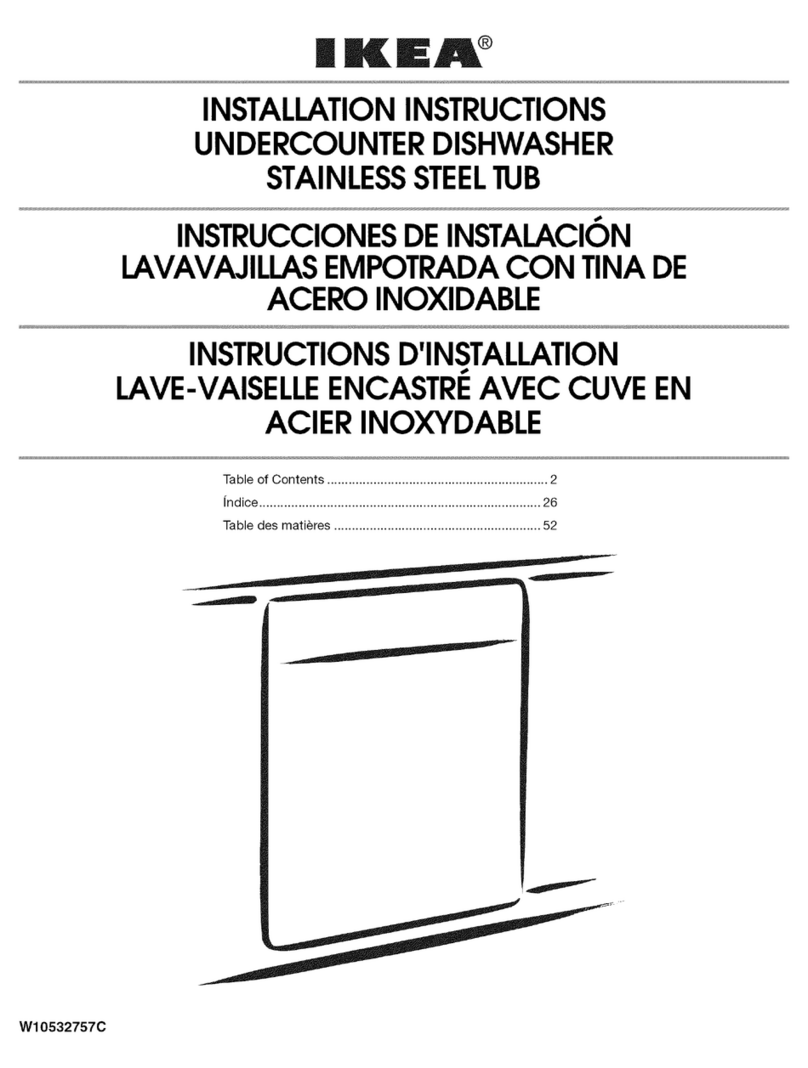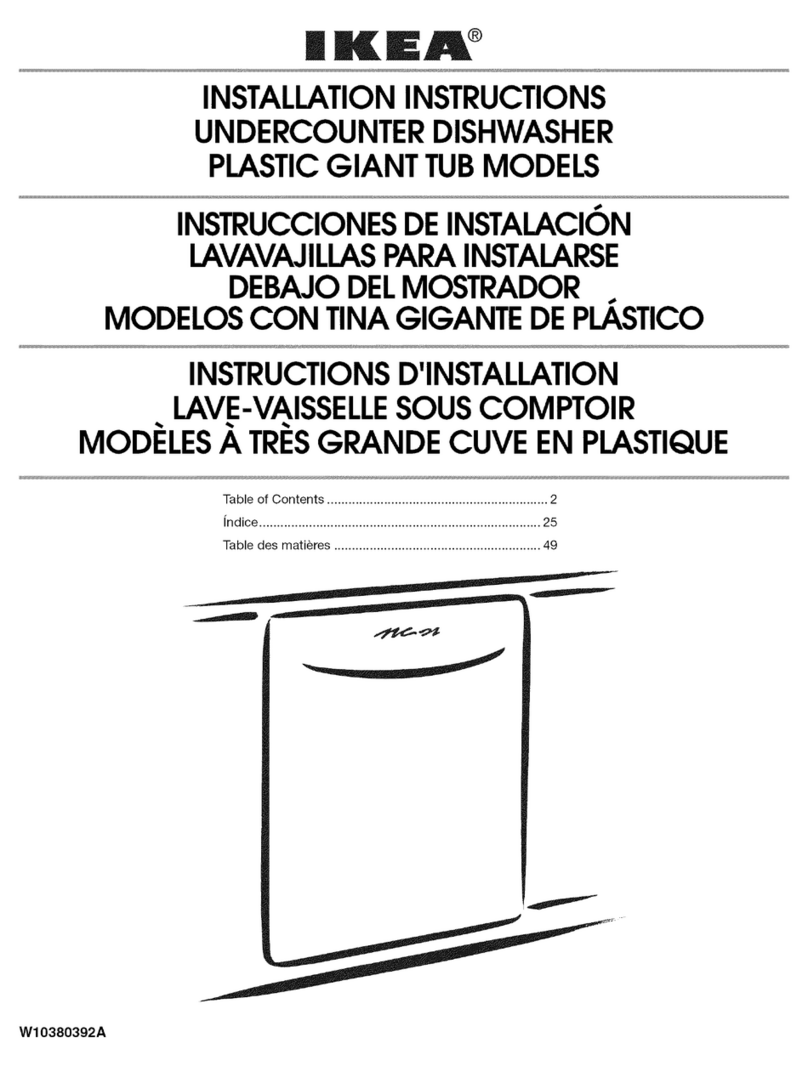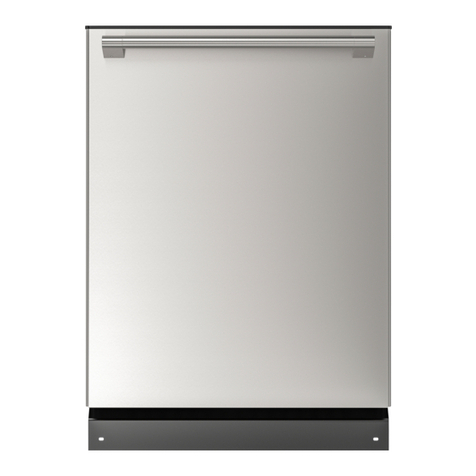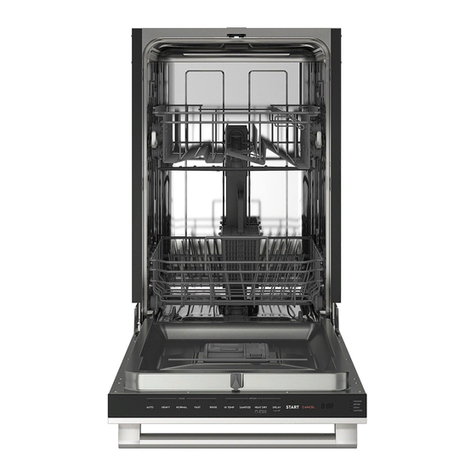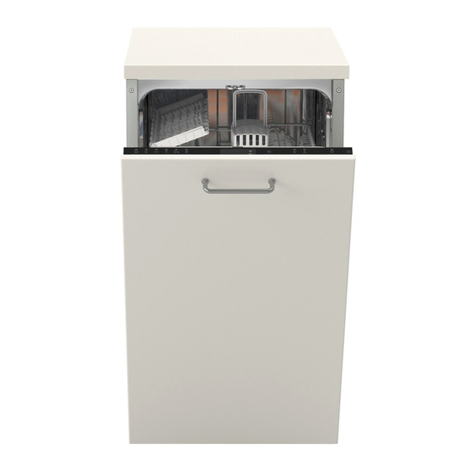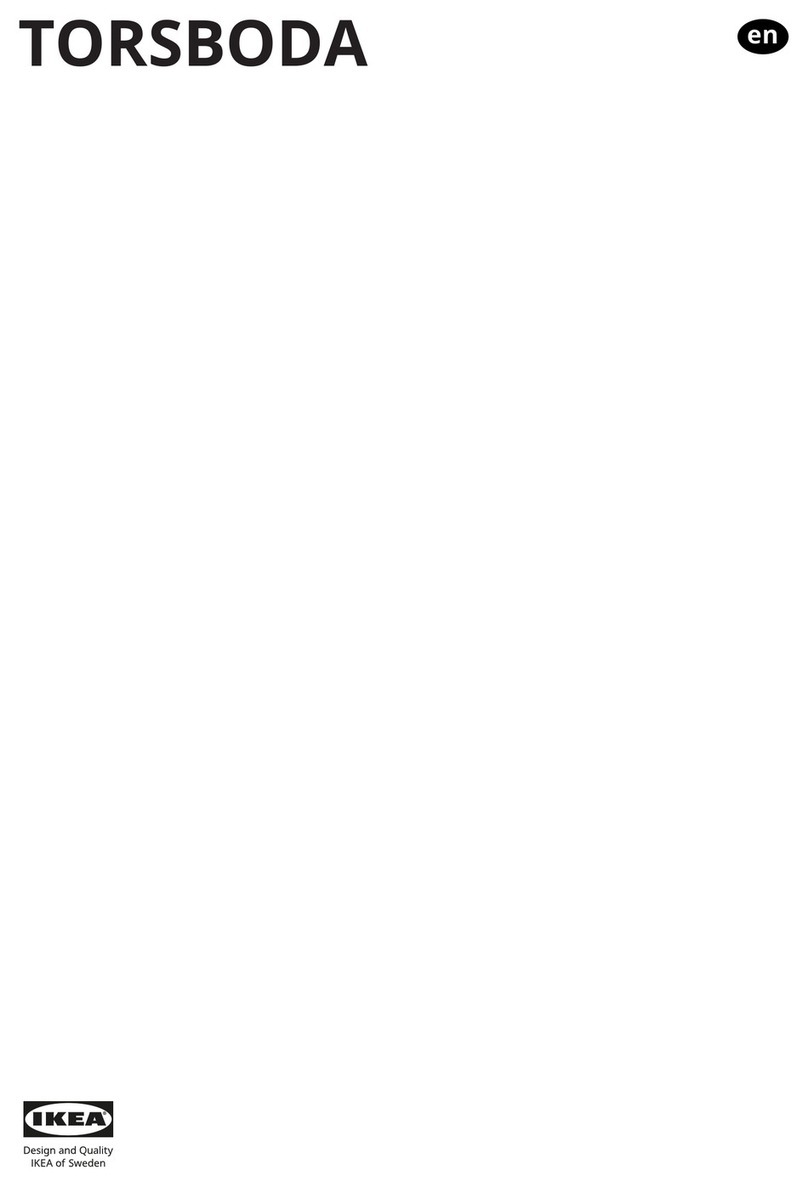
TABLEOF CONTENTS
DISHWASHER SAFETY ................................................................. 3
Before Using Your Dishwasher .................................................... 4
PARTS AND FEATURES ................................................................ 5
Control Panels .............................................................................. 6
START-UP GUIDE .......................................................................... 6
Using Your New Dishwasher ....................................................... 6
Stopping Your Dishwasher .......................................................... 6
DISHWASH ER LOADING ............................................................... 7
Loading Suggestions ................................................................... 7
Loading Top Rack ........................................................................ 7
Loading Bottom Rack .................................................................. 7
Loading Silverware Basket .......................................................... 8
DISHWASHER USE ........................................................................ 8
Detergent Dispenser .................................................................... 8
Rinse Aid Dispenser ..................................................................... 9
Dishwasher Efficiency Tips .......................................................... 9
Cycle Selection Charts ............................................................... 10
Canceling a Cycle ...................................................................... 10
Changing a Cycle or Setting ...................................................... 11
Adding Items During a Cycle ..................................................... 11
Option Selections ....................................................................... 11
Drying System ............................................................................ 11
Overfill Protection Float .............................................................. 11
WASHING SPECIAL ITEMS ......................................................... 12
DISHWASHER CARE ................................................................... 13
Cleaning ...................................................................................... 13
Cleaning the Filter Screen .......................................................... 13
Drain Air Gap .............................................................................. 13
Storing ........................................................................................ 13
TROUBLESHOOTING .................................................................. 14
ASSISTANCE OR SERVICE ......................................................... 16
WAR RANTY .................................................................................. 17
TABLEDESMATIERES
SI_CURITI_ DU LAVE-VAISSELLE ............................................... 19
Avant d'utiliser le lave-vaisselle ................................................. 20
PII_CES ET CARACTI_RISTIQUES .............................................. 21
Tableaux de commande ............................................................ 22
GUIDE DE MISE EN MARCHE .................................................... 22
Utilisation de votre nouveau lave-vaisselle ................................ 22
Arr_t du lave-vaisselle ................................................................ 23
CHARGEMENT DU LAVE-VAISSELLE ....................................... 23
Suggestions de chargement ...................................................... 23
Chargement du panier superieur ............................................... 23
Chargement du panier inferieur ................................................. 24
Chargement du panier a couverts ............................................. 24
UTILISATION DU LAVE-VAISSELLE ........................................... 25
Distributeur de detergent ........................................................... 25
Distributeur d'agent de rin;age .................................................. 26
Conseils d'efficacite pour le lave-vaisselle ................................ 27
Tableaux de selection de programmes ..................................... 27
Annulation d'un programme ...................................................... 28
Changement d'un programme ou reglage ................................ 28
Addition de vaisselle durant un programme .............................. 28
Selection d'options ..................................................................... 28
Systeme de sechage .................................................................. 29
Dispositif de protection contre le debordement ........................ 29
LAVAGE D'ARTICLES SPI'--CIAUX .............................................. 30
ENTRETIEN DU LAVE-VAISSELLE ............................................. 31
Nettoyage ................................................................................... 31
Nettoyage de I'ecran du filtre ..................................................... 31
Dispositif anti-refoulement ......................................................... 31
Remisage .................................................................................... 31
DI_PAN NAGE................................................................................. 32
ASSISTANCE OU SERVICE ......................................................... 34
GARANTIE ..................................................................................... 35
2
